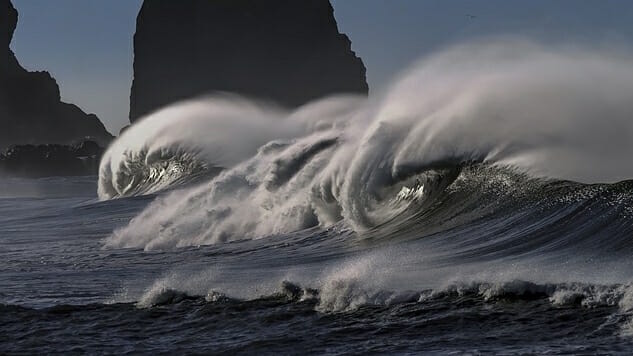Making Energy with Waves and NASA
A renewable resource on land, with a little help from space
Anyone knocked down by a wave at the beach or watched a film such as The Finest Hours knows that water is a powerful force. Oceans in particular have the ability to serve as a renewable energy resource. But the very thing that makes it so appealing—its power—also makes it difficult to tap.
The simplest way to describe wave energy is what anyone can observe on a stormy day. Wind blows on water causing it to move, which creates waves. This motion, called kinetic energy (the energy an object has because of its movement) can be used to create electricity. Unlike the simple experiment of a gerbil running on a wheel to power a lightbulb, the mechanical wave energy converter (WEC) that’s necessary to transform that energy into electricity is complicated.
The payoff for the effort makes it worthwhile because more than 50 percent of the U.S. population lives along our coastlines. The “colocation of the source and the consumption” of energy make waves an ideal renewable resource, according to Giorgio Bacelli, a postdoctoral researcher with Sandia National Laboratories.
“For energy security, it’s renewable,” he says. “It’s a difficult challenge, but … society will benefit from differentiating (our) energy portfolio.”
Making Waves
European countries have been exploring wave energy since the 1970s, and the U.S. has had to play catch-up in order to participate in research and development of technological advancements. But Bacelli believes the gap is nearly closed due in part to a recent effort by the U.S. Department of Energy (DOE). The Wave Energy Prize was designed to “increase the diversity of organizations involved in WEC technology development.
Bacelli, who served as a technical advisor for the competition, says a primary goal is to reduce the cost per kilowatt hour (kwh) of wave energy. The Department of Energy’s 2015 “baseline estimate for floating, deep-water wave energy” was approximately $0.90 per kilowatt hour (kWh). By early 2017, the DOE provided an estimate of $0.66/kWh “to the Q1 Government Performance and Results Act.” The current wave energy technology development supported by the department has a stated goal of $0.17/kWh by 2030.
“Never before this project, this contest, have we seen a direct comparison on the same system, the same situation of so many different technologies,” he says. “All of these different technologies have been compared in the same scenario with the same waves and the same set up. Companies, developers, researchers are going to have access to this data to learn the pros and cons of each.”
Because the ocean environment is so harsh, engineers are experimenting with numerous types of WECs to find those that will be effective in all kind of weather and withstand saltwater corrosion. One of the most common types is a buoy, which floats on the surface of the water and tethered to the seabed. Bacelli explains that an underground cable transfers the energy created by the buoy to land.

The largest model-scale wave energy testing of its kind is being performed by Sandia National Laboratories at the Navy’s Maneuvering and Sea Keeping facility at the Carderock Division in Bethesda, Maryland. Photo courtesy of Sandia National Laboratories
Can NASA Improve the Physics?
-

-

-

-

-

-

-

-

-

-

-

-

-

-

-

-

-

-

-

-

-

-

-

-

-

-

-

-

-

-

-

-

-

-

-

-

-

-

-

-








































